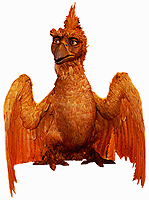Series as a Genre Unto Themselves
 Roger Sutton just wrote about the issues provoked by sequels and series, asking how reviewers and prize judges can evaluate them. Must one know the ultimate ending of the series to gauge the first volume? Must readers have read the foregoing volumes to appreciate a later entry? And if part 2 is better than part 1 or part 3 (The Empire Strikes Back, anyone?), can it satisfy without a true beginning or end?
Roger Sutton just wrote about the issues provoked by sequels and series, asking how reviewers and prize judges can evaluate them. Must one know the ultimate ending of the series to gauge the first volume? Must readers have read the foregoing volumes to appreciate a later entry? And if part 2 is better than part 1 or part 3 (The Empire Strikes Back, anyone?), can it satisfy without a true beginning or end?
As one example of the quandary, on the Child_Lit email list, Charlie Butler started a list of classic twentieth-century British children's books with E. Nesbit's Five Children and It. For my money, the first sequel, The Phoenix and the Carpet, is superior because of the superior character of the Phoenix (pictured above, at least according to the BBC). And the third book, with its look at mankind's past and future, has more philosophical depth than the first. Clearly, the sequels couldn't have existed without the first book, but the series as a whole outweighs that beginning. In the end, I think it's best to consider this Nesbit series as a whole.
As I discussed in this posting about Diana Wynne Jones's The Pinhoe Egg, sequels that closely follow a preceding book offer a pleasure different from standalone books. They offer variations on the familiar rather than the thrill of discovery.
Series also sell differently, of course, as we see in how children's bestseller lists now routinely separate series titles from standalones, lest the latter be crowded out entirely by volumes of The Magic Tree House. Of course, that can make it awkward when a successful single title spawns gobs of sequels--what was once respectable enough to merit a place on the main list might get shunted off to the category of books that sell too much.
Only some series are planned from the beginning (Harry Potter, A Series of Unfortunate Events, Percy Jackson), and others forced into separate volumes by length (The Lord of the Rings, Octavian Nothing). But most series start out as standalone titles, and they evolve into series because of that most powerful motivator for writing: ready money.
Book 1 sells a bundle. More readers means more people wondering, "What happened next?" (even if, as in Wicked, the main character is D-E-A-D, dead). Publisher and agent drop hints about the wisdom of revisiting that well. Author can't help but think gratefully of those characters and that world. And before we know it, as Bobcat Goldthwait said about the need for Police Academy 4, "There were so many unanswered questions!" crying out to be addressed.
Sometimes sequels really do address questions that the original volume couldn't touch. Bruce Coville's My Teacher Is an Alien started as a catchy title suggested by packager Byron Preiss and grew into a series with depths that its beginning never hinted at.
L. Frank Baum's Oz books managed to be all types of sequels: incremental, planned, and then ground out endlessly. They come in four layers, defined by how long he imagined his series to be when he wrote:
The sequel phenomenon may be especially strong in children's books because there's such a tradition of series, many very good and even more beloved. Of the past twenty-five years of Newbery winners, I count at least half a dozen that inspired sequels or were sequels.
Compare that to Pulitzer-winning novels in the same period. In serious adult fiction, an author may already have to be at the top of his game (as in Updike, Roth--and I do mean "his") to get away with such a commercial move as writing a sequel. Larry McMurtry's sales remain high, but was his literary star higher before he started writing sequels to Lonesome Dove?


No comments:
Post a Comment